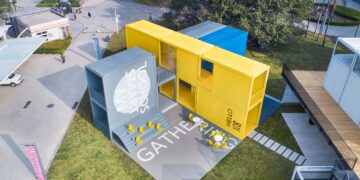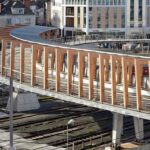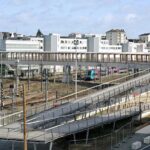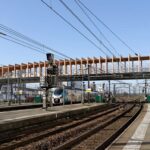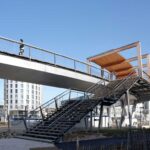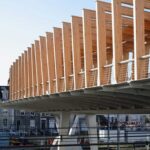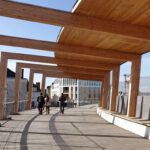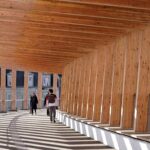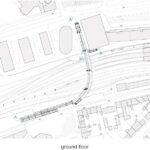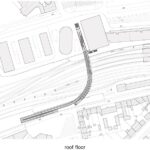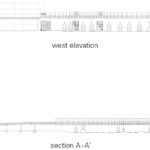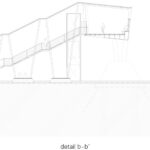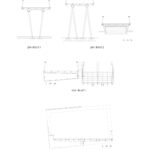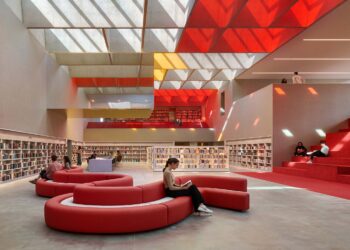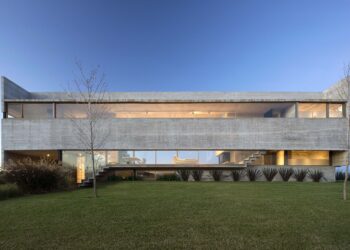New timber pedestrian footbridge combines accessible construction with design elegance
생로 기차역, 목재 열주가 돋보이는 육교
Dietmar Feichtinger Architectes | 디에트마르 파이히팅어 아키텍츠
.
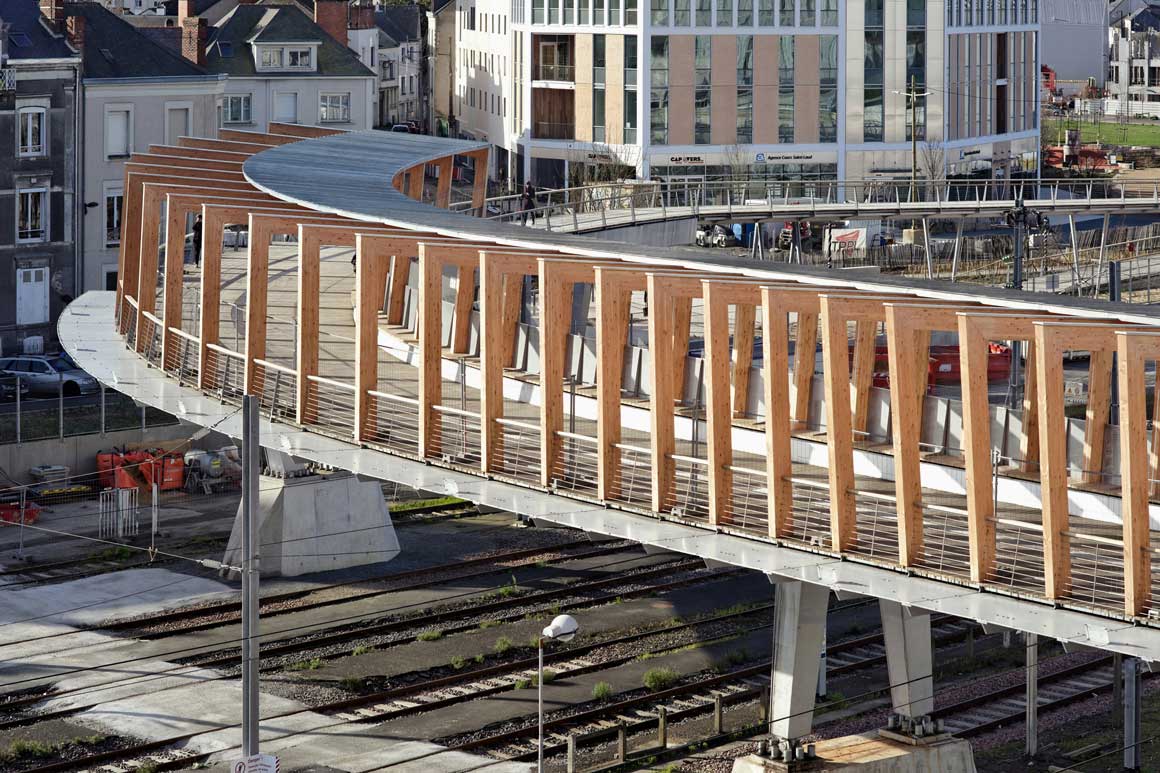
.
Dietmar Feichtinger Architectes have designed a new bridge for pedestrians and cyclists at the Angers Saint-Laud train station. Angers is a city of 153,000 inhabitants in western France. Saint-Laud railway station is a major transport hub; TGV trains to Paris stop there 13 times a day, and there are about 40 trains a day to Nantes.
앙제는 프랑스 서부에 있는 도시로 인구는 약 15만 명이 조금 넘는다. 생로 기차역은 파리행 TGV 열차가 하루에 13편, 낭트행 기차는 40편 정도 운행되며 프랑스 서부의 교통 중심을 담당한다. 역 근처 ‘루 오귀스트 고티에’ 길에는 사무실과 주차장 건물이 지어졌고, 현재는 호텔을 건설 중이다. 남쪽에는 산책로와 공원을 조성할 예정이다.
이런 역주변의 도시 개발과 함께 철길 위에 있던 낡은 철근 콘크리트 육교를 대신할 새로운 다리가 들어섰다.
.
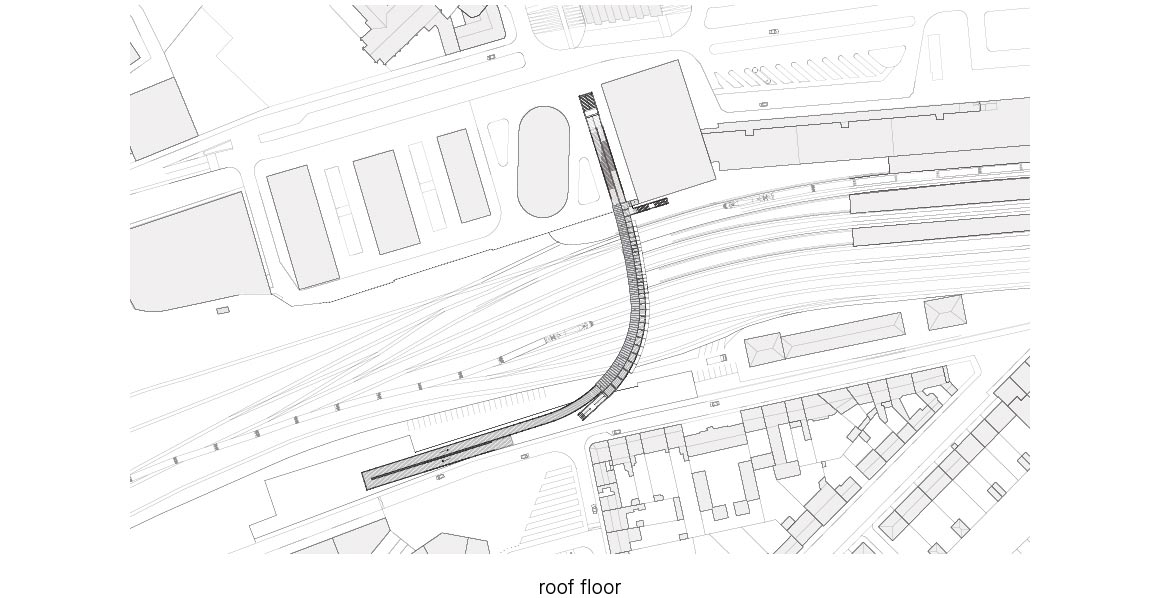

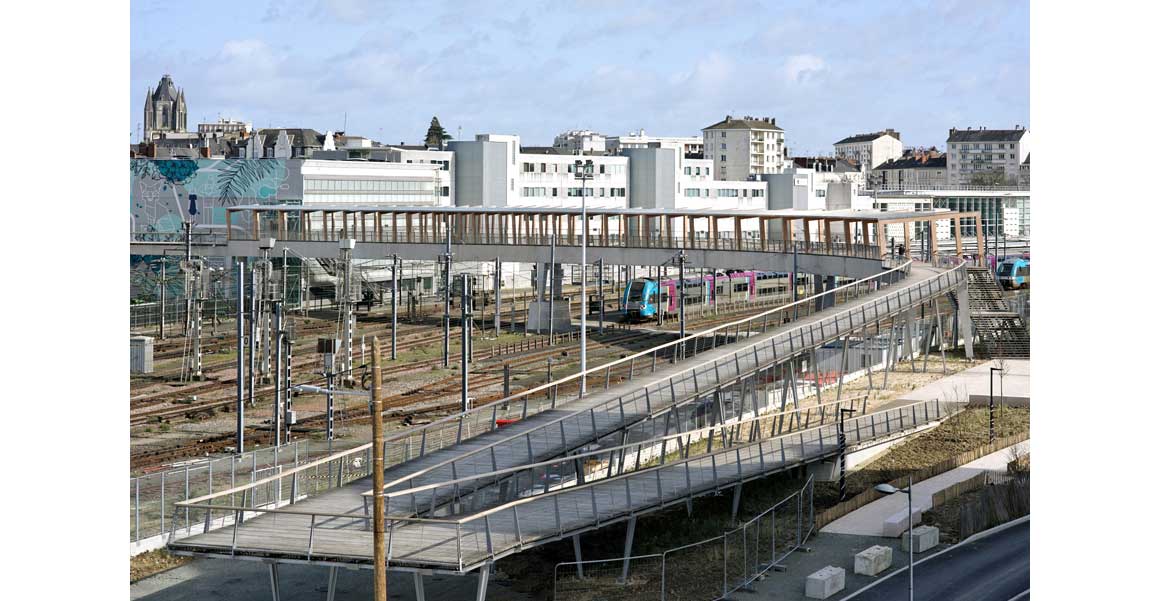
.
The new bridge is characterized by a soft, wide arch that crosses the entire width of 70 meters, carved into the topography of the city by the bundles of rails. These cables cut a deep corridor running towards the city. This replaces the old reinforced concrete pedestrian bridge, crossing directly over the tracks, which was badly damaged.
The urban development plans include an upgrading of the area. On the railway station side, offices and a multi-story car park have been built on Rue Auguste Gautier, and a hotel is under construction. To the south of the bundle of tracks, a new promenade and park will be built. Dietmar Feichtinger Architectes’ bridge design is based on the urban scale, overcoming the barrier of the railway tracks and providing direct access for disabled people to the platforms via lifts and stairs. These three lifts and stairs create a direct, obstacle-free and bicycle-friendly connection with the station and hotel, as well as with the platforms of the trains to Paris and Nantes. In its aesthetics, the bridge is an expression of the renewal of the Station district.
.

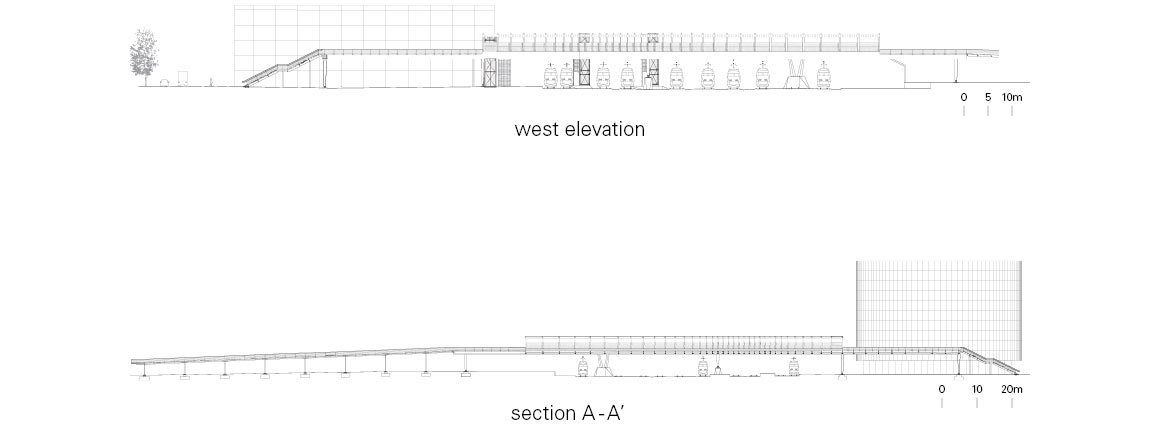
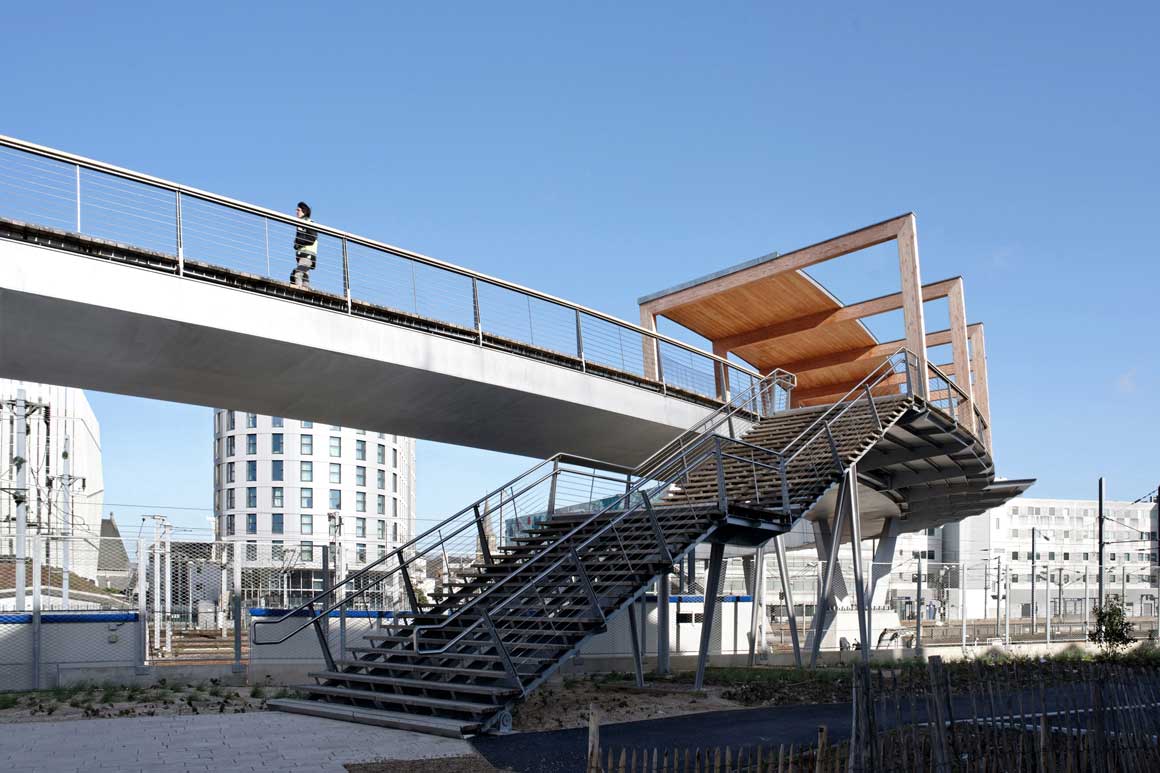

.
육교는 부드러운 반원을 그리며 70m 너비의 철도를 가로지르고, 역과 승강장, 주변 호텔 등을 잇는다. 3대의 엘리베이터가 있어 장애인뿐만 아니라 자전거도 편리하게 오간다.
빈 박스를 올려놓은 듯한 다리는 목재 구조물과 강철 브래킷, 벤치 등으로 구성된다. 구조물 사이사이로 철로와 기차, 그리고 도시의 다채로운 모습이 엿보인다. 열주의 건축미는 다리에 정체성을 부여하며, 육교를 이 지역의 랜드마크로 만들었다.
각종 기능은 매립형으로 설치되었다. 평지붕과 조명은 목재 구조물에 합쳐져 있고, 벤치는 난간과 통합되었다. 또한 날씨가 좋지 않을 때 안전하도록 다리 상판에 미끄럼 방지 띠를 붙였다.
.
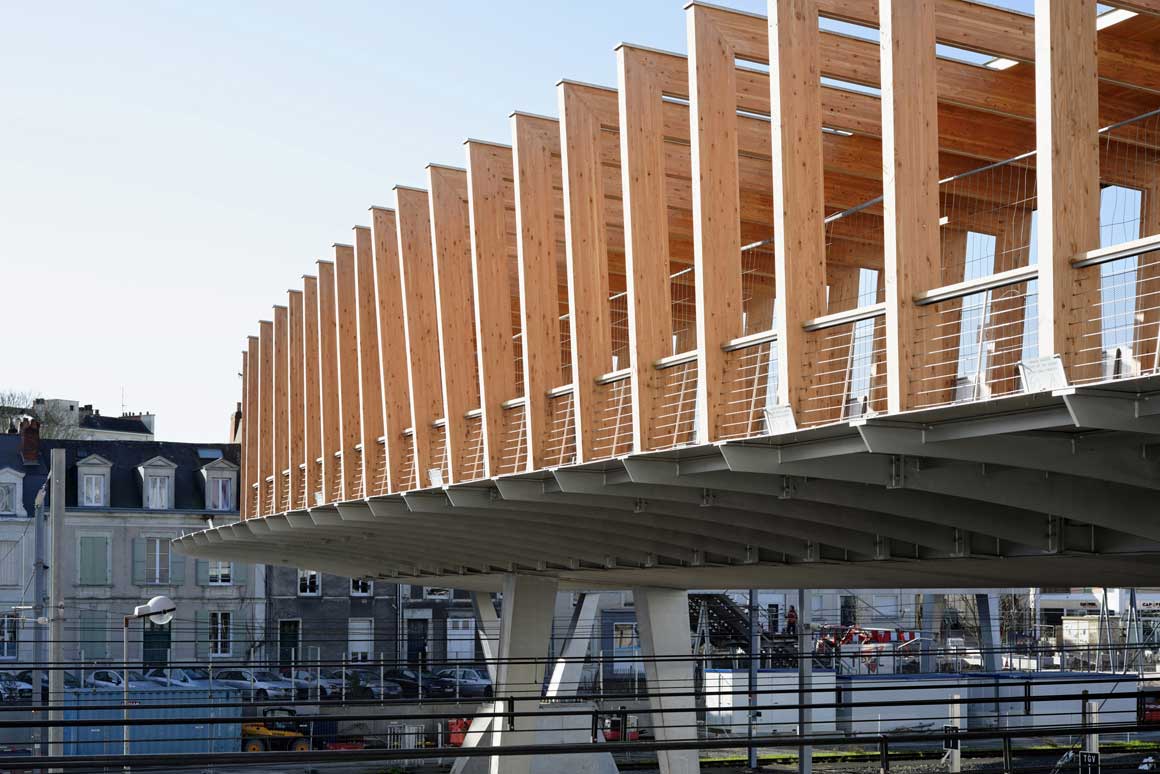


.
The substructure of the bridge consists of a hollow box and steel brackets in which benches with wooden seats are integrated.
Above all, the bridge is a singular traffic structure that becomes a landmark with its gently curved path, its constructive elegance and the remarkable laminated wood porticoes that support both the lighting and the flat roof. These wooden frames not only shape the relationship between the passers-by and the place, they also have a specific function: they serve to integrate lighting while protecting against weather and wind. These elements are integrated into their construction. Anti-slip strips are embedded in the wooden footbridge, ensuring that the bridge can be used safely even under bad weather conditions. The varying distances between these punctuated images of the path offer different views of the tracks, the trains and the city. Benches along the balustrades invite you to sit down. The bridge becomes a path and a place.
The wooden porticoes become strong identity elements of the bridge. They underline the crossing and enter into a dialogue with the city, punctuating the journey.
.

.
Project: Footbridge of the high speed train station Saint Laud / Location: Gare TGV Saint Laud, France / Architect: Dietmar Feichtinger Architectes / Team competition: Jan Feichtinger, Radek Smrcina, Jordan Kalapchiev / Team planning: Jan Feichtinger / Site supervision: Arthur Royer / Engineer: SBP / Aerodynamic studies: BOAS / Contractors: GTM, AE BRETAGNE / Lighting design: Wonderfulight / Metallery: SA SMB (Co-traitant) / Charpenter: SAS BRIAND BOIS (Co-traitant) / Client: ALTER Cités / Length: 150m / Length without ramp: 130m / Clear span: 35m / Width: 6~8m / Height above street level: 6m / Materials: Wood on the deck_massif oak, origin Grand Ouest de la France, Handrail_same material, Porticoes_laminated timber frames Douglas français, Panels for roof covering CLT / Cost: EUR 6M / Competition: 2016.11 / Construction: 2018.10~2020.1 / Photograph: David Boureau









